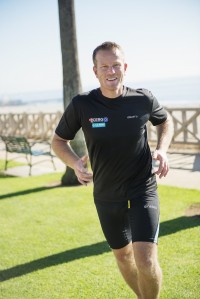 Cancer is globally increasing and is one of the major threats to healthy aging. To date we have no indications that this will change for decades. While the relationship between physical fitness and cardiovascular diseases is well documented, the relationship between cancer and cardiorespiratory fitness is less studied.
Cancer is globally increasing and is one of the major threats to healthy aging. To date we have no indications that this will change for decades. While the relationship between physical fitness and cardiovascular diseases is well documented, the relationship between cancer and cardiorespiratory fitness is less studied.
Physical activity has been shown to benefit the cancer patients in many ways, such as improved quality of life, reduced fatigue and better cardiorespiratory fitness. In addition, it is well established that being physically active reduces the risk of developing several cancer types. In fact, as much as one-fifth to one-third of several common cancer types, including breast- and colon cancer, are associated with low levels of physical activity together with obesity. However, the association between cardiorespiratory fitness and cancer survival is less well documented.

Researchers from Denmark recently published a large long time follow up study where they investigated the association between cardiorespiratory fitness and death from cancer. The study included 5131 cancer free men and tested their cardiorespiratory fitness. The men were followed up for 42 years and during the follow up period 1527 (29.8%) of them died from cancer. Interestingly, the researchers found a highly significant association between cardiorespiratory fitness and death from cancer. For every 10 mL/kg/min increase of estimated cardiorespiratory fitness (measured as maximum oxygen uptake) risk of death decreased by 17-24%. It must be mentioned that cardiorespiratory fitness was not associated with death from prostate cancer but associated with other groups of cancer.
Based on this study, it is clear that cardiorespiratory fitness should be considered in order to reduce the risk of dying from cancer. Recently a Scientific Statement on Cardiorespiratory Fitness released by the American Heart Association identified cardiorespiratory fitness as a vital sign, which should be used in clinical practice.
Perhaps the clear association they found in this study between cardiorespiratory fitness and cancer survival can also encourage and inspire us to change our lifestyle.
Anne Marie Ormbostad Berre, PhD student at CERG


 “Confused about how much exercise to take for a healthy heart? Norwegian researchers have come up with a useful app that allows you to personalise the amount of exercise needed to reduce your risk of death from heart attack and stroke”,
“Confused about how much exercise to take for a healthy heart? Norwegian researchers have come up with a useful app that allows you to personalise the amount of exercise needed to reduce your risk of death from heart attack and stroke”,  We all know that a sedentary lifestyle is unhealthy and that we should be physical active. However, why is that? Why does evolutionary biologist describe natural selection as survival of the fittest meaning that the “fit” has a greater probability for survival than the “unfit”. Under follows a brief and simplified history lesson on why we become “born to be active”.
We all know that a sedentary lifestyle is unhealthy and that we should be physical active. However, why is that? Why does evolutionary biologist describe natural selection as survival of the fittest meaning that the “fit” has a greater probability for survival than the “unfit”. Under follows a brief and simplified history lesson on why we become “born to be active”. On our website we have
On our website we have  Close to 175 000 attendees, including 6000 journalists, visited to the worlds largest convention for consumer electronics, CES, last week in Las Vegas. Among them was
Close to 175 000 attendees, including 6000 journalists, visited to the worlds largest convention for consumer electronics, CES, last week in Las Vegas. Among them was  January 6th, the fitness app
January 6th, the fitness app  In 1966 a legendary study from Dallas was published where they studied the effect of total inactivity for 3 weeks. After this 3 week period, the so-called “Dallas bed-rest study” found an increase in body weight, body-fat and a marked decline in fitness level.
In 1966 a legendary study from Dallas was published where they studied the effect of total inactivity for 3 weeks. After this 3 week period, the so-called “Dallas bed-rest study” found an increase in body weight, body-fat and a marked decline in fitness level.  The UTFORSK project
The UTFORSK project


















 There is now plenty of evidence that prolonged sitting increases diseases such as heart disease and diabetes. Some office workers who also sit when commuting can sit for up to 13 hours/day, and data shows that sitting kills more people than smoking.
There is now plenty of evidence that prolonged sitting increases diseases such as heart disease and diabetes. Some office workers who also sit when commuting can sit for up to 13 hours/day, and data shows that sitting kills more people than smoking.